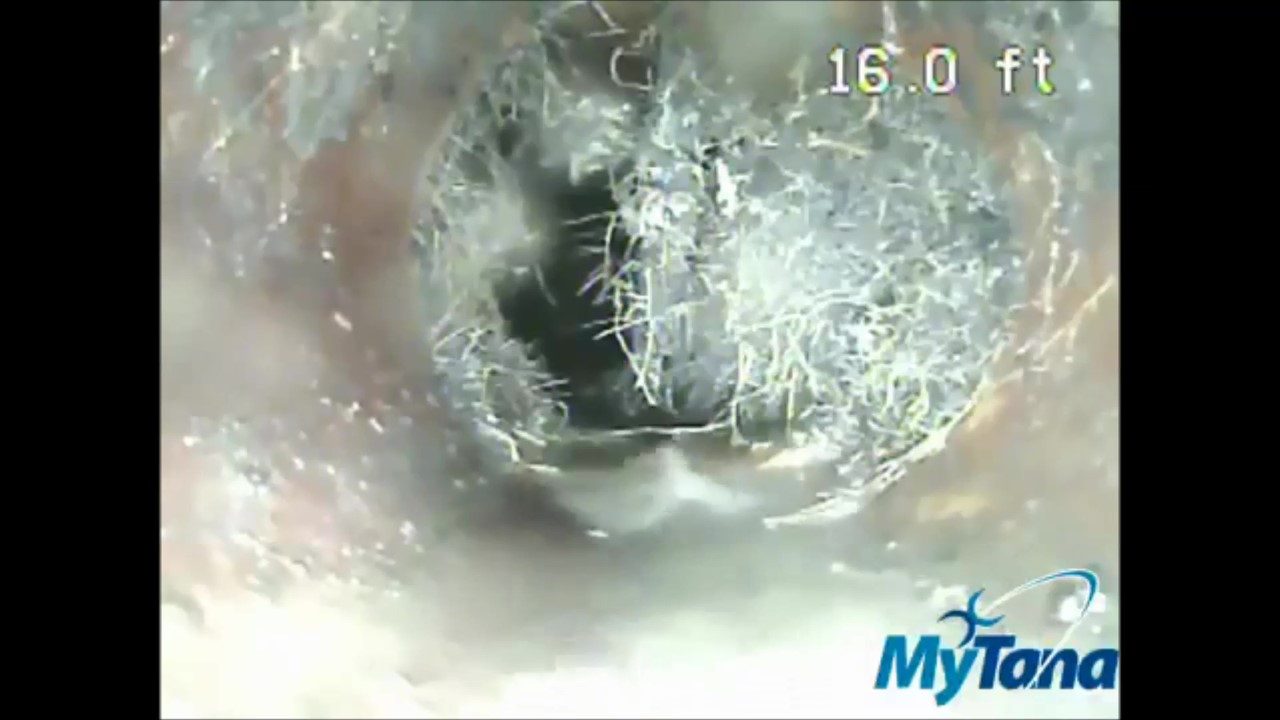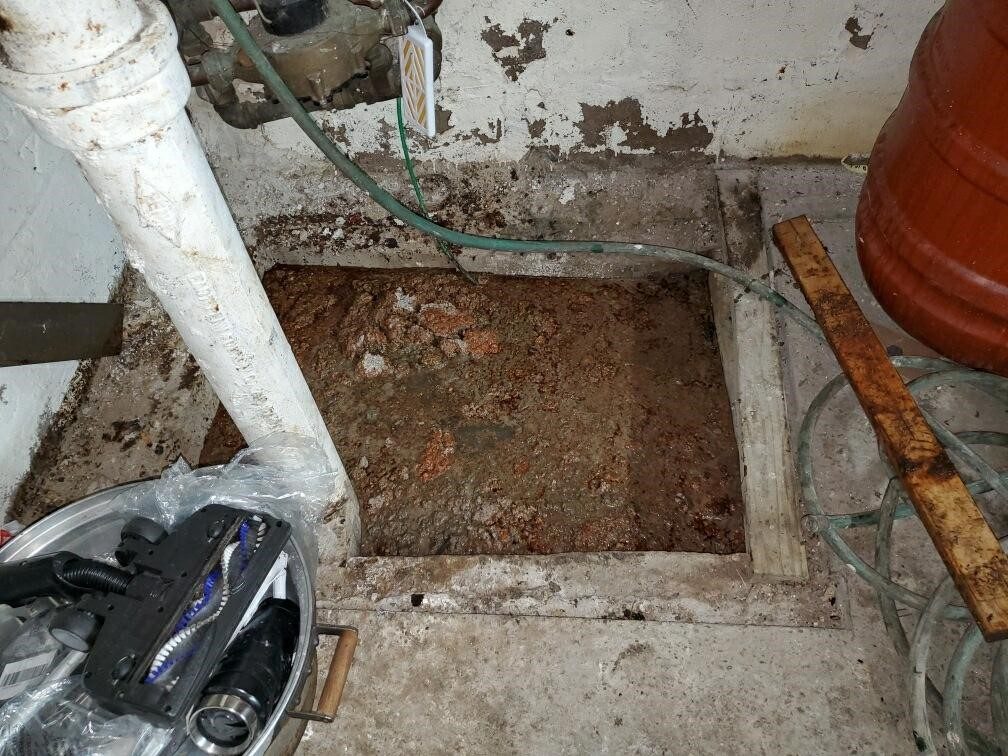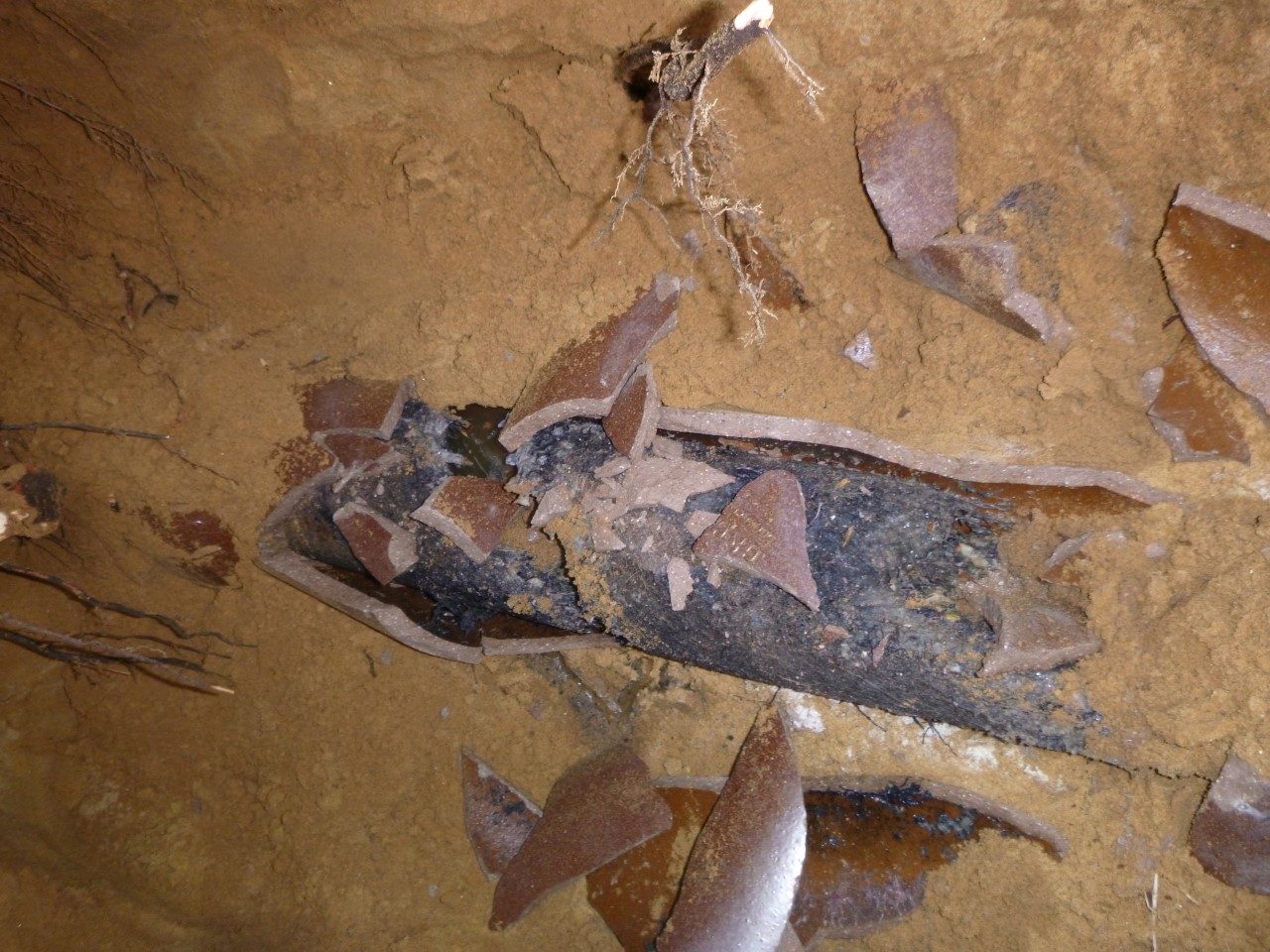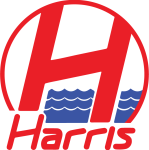A sewer line is the piping that removes all the water from your home (sinks, showers, washing machine, toilets, etc.) to the city sewer system. It is important to maintain your sewer line to avoid any sewer backups into your home.
If you sewer line is not maintained, it may result in a backup, which can damage your property and create a health hazard from the sewage gases. It is suggested to perform an annual maintenance service on your sewer line—even if you do not suspect any issues with the pipe. The annual service should include a sewer camera inspection to evaluate the condition of the pipe.
Why perform a camera inspection?
A camera inspection is the only way to determine the condition of your pipe is underground. The video will show the material makeup of the pipe, such as clay, cast iron, or PVC. Knowing the makeup of your pipe ss important to assist the sewer and water contractor to determine how old the pipe is. If the findings include a clay pipe, it is safe to say that the pipe is more than 50 years old and a minimum of one maintenance per a year is required. If the camera determines that you have cast iron pipe that is in good condition, the maintenance company may suggest that a routine checkup is scheduled every 18 months. If any material pipe is not managed as suggested, it may result in a main sewer line replacement.
It is suggested to keep a copy of the camera inspection as a comparison for the future. Comparing two rounds of inspections at a later date may help determine if the sewer line has a separation or crack. The comparison of the two videos will assist in determining how much time the sewer has until a replacement is needed as well as the possible cause.
In some cases, the sewer and water contractor may determine that the sewer is back pitched, which becomes a larger problem and is hard to maintain. A back pitched sewer line means that the sewer line slop is facing the wrong direction. The sewer line is supposed to run with gravity allowing the sewage to flow down-hill out to the city sewer. If the sewer line is back pitched, the sewage would have to flow up-hill which becomes challenging and commonly results in reoccurring sewage backups.
Methods for sewer maintenance
There are several different sewer maintenance options that are all dependent on the condition of the pipe. In some cases, a standard sewer snake can be used to clean out your pipe from the trap out to the street. If there are no obstructions this alone will suffice. The property owner will not need to see the crew until the next maintenance period.
In the scenario where the snake continues to hit an obstruction, the plumber may try to utilize a smaller size snake to try and penetrate the obstruction. The smaller snake head may be able to break through the obstruction, allowing the larger head to be reinserted and completely clear the section of the pipe.
If neither of the sewer snakes are successful, your contractor may want to utilize a water jet. This option is more powerful and serves a continuous force against the obstruction. In many cases, the water jet can clear the obstruction and the plumber can determine the cause of the obstruction. Was it grease lodged in the pipe? Dense tree roots? Sanitary napkins? There are many possibilities and it is always in your best interest to understand the cause in order to prevent further instances.
In scenarios such as with tree roots, there is nothing that he owner could have done to avoid the blockage. Other scenarios, like wet wipes or sanitary napkins, are in the control of the property owner. If made aware they can certainly avoid future use of these products. It is common that the owner themselves are not using these products and a tenant continues to flush whatever they want down the toilet. Over time, we have removed wigs, toys, potato chip wrappers, and many other items one would not expect.
How dangerous is a sewer backup?
The primary issue with a sewer backup is the sewage gases that the people living in the house are exposed to. Sewage contains bacteria, viruses, and other containments that may assist in spreading disease. If you have small children or infants in the house and you have a sewage backup that is not resolved, it is strongly suggested to remove the children from the house until the backup is cleared.
It is also important to be mindful of any pets you may have, they should be treated the same as children as they are closer to the ground and susceptible to touching or ingesting the sewage itself.
Another danger of sewage backup are the physical damages. A sewer backup may result in damage to furniture, sheetrock, carpet, etc. pending the severity. In most cases, these items must be discarded due to the bacteria and risk of illness.
What to do if the pipe is cracked or separated?
If a pipe is cracked or separated, the only permanent resolution is to repair the section of pipe that is damaged or replace the main sewer line entirely. It’s safe to assume if one part of the sewer line is broken, that a separate section of the pipe is susceptible to an issue soon. However, that’s not to say that you must replace the entire sewer line. Most homeowners want to avoid digging and replacing another section of their sewer line and choose to get the entire pipe replaced at once. Not only does this save time, it keeps the cost down as it is much more cost effective to replace the entire pipe at once.
Another option that some people entertain is to continue and snake the line until the pipe completely fails. This is simply a band-aid. In most cases, a homeowner would do this only to avoid the cost of excavating to repair the pipe—we call this “Sewer line denial”.
The other risk when trying to maintain a broken or cracked sewer line is making a bad scenario even worse. If a sewer line is broken, the sewage is exiting the pipe at the point of the break and soaking into the surrounding soil. At some point the ground will become oversaturated resulting in one final, nasty backup as well as creating a sinkhole above ground. Trying to snake a sewer line with a break only results in shifting the broken pipe while trying to allow more sewage to soak into the soil.
How to treat tree roots?
It is possible to maintain a sewer line with roots in it over an extended period of time. However, you should be aware that the pipe will fail at some point. Tree roots will continue to grow thicker and more quickly over time. Along with the promise of future failure, maintenance is required anywhere from 3-6 times per year to clear out the pipe.
You can use a sewer snake with a blade on the end to continually cut the roots which will work—but it is important to understand the larger the roots, the larger the separations and cracks in the pipe. You can also use a water jet to ensure optimal root removal, but this option is a bit riskier. The pressure of the water jet may further damage the cracked pipe, leaving you with a more severe problem.
If the problem with your pipe is roots, a back pitch, or a separation, it is always suggested to try and get ahead of the problem by repairing the actual pipe itself. It is always suggested for the homeowner to crunch the numbers and figure out how many $400 maintenance fees will add up to the cost of the pipe replacement. Most homeowners are surprised to see that they could have repaired or replaced the pipe for the amount they spent on maintenance over the previous 5-10 years.























